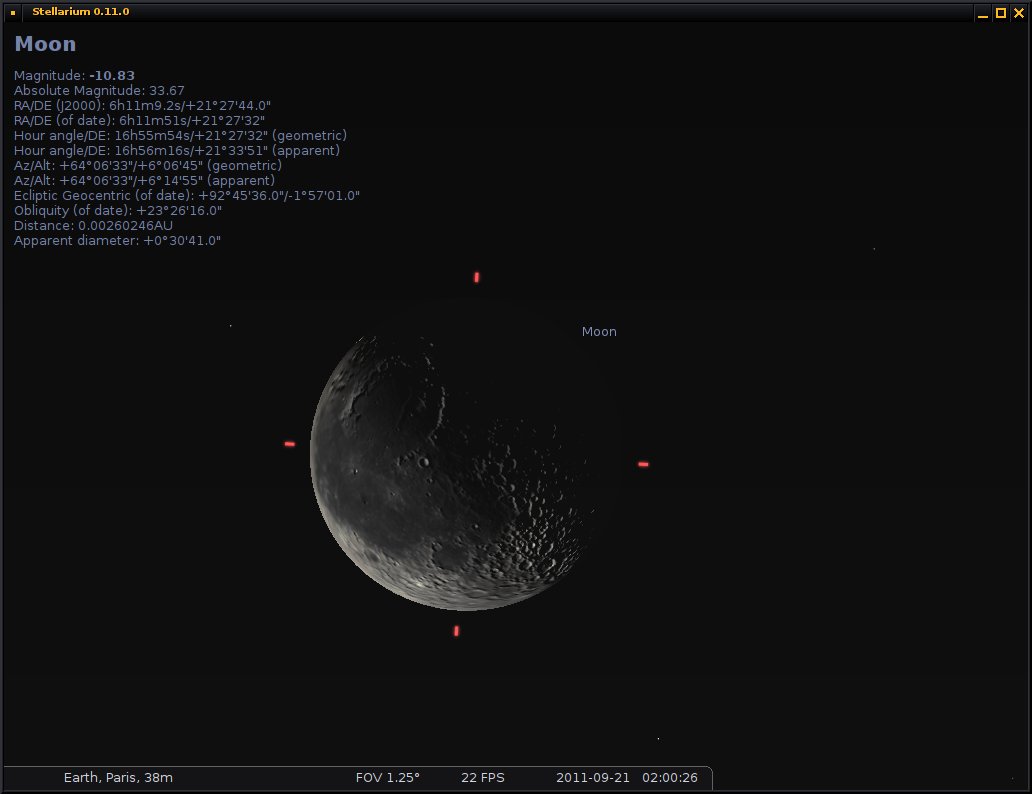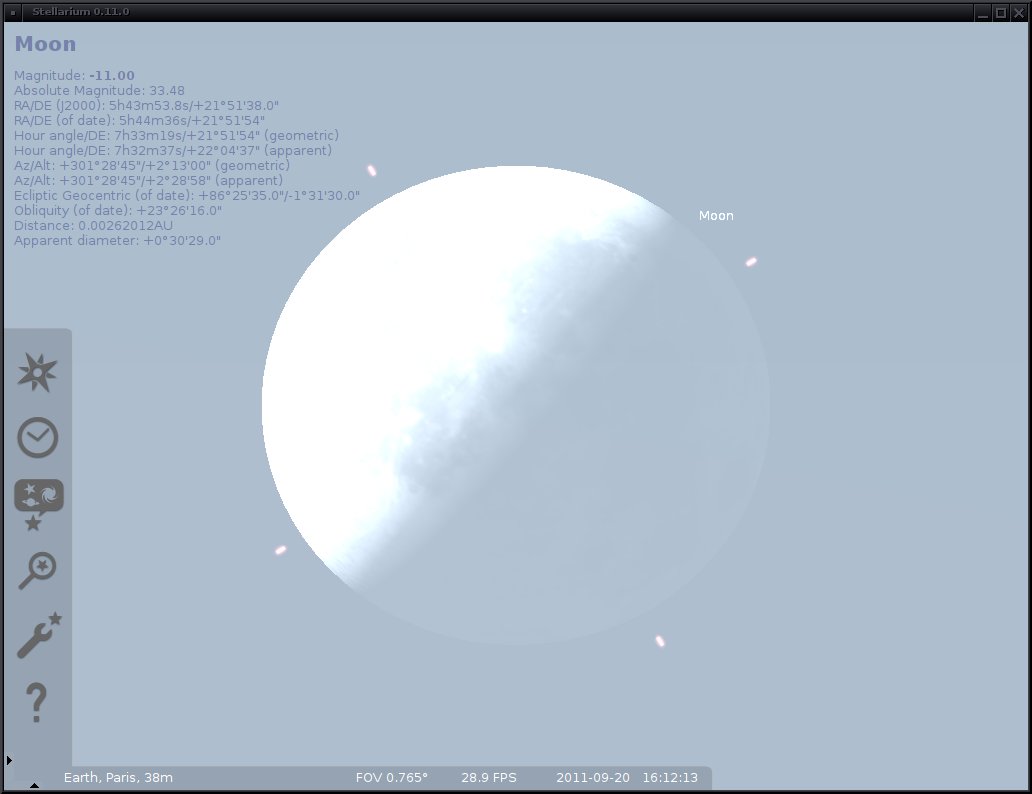Here are some screenshots of the new planet rendering in the Stellarium software, implemented as part of the European Space Agency Summer of Code in Space. I implemented a bump mapping algorithm (using normal maps) in GLSL shaders and I integrated it into the Stellarium application (C++). The planets are ellipsoids. There are still many different things to be done for further improving the project, these are just some samples.
(Many thanks to my mentor Fabien Chéreau and the Stellarium development team for giving me the opportunity to participate in the ESA SOCIS, as well as to the organizers of the summer of code!!)*
Screenshots of the moon at night:


Screenshots of the moon when there’s still daylight:



Some weeks later, I implemented also cloud rendering using procedural textures and perlin noise. The following video shows how the clouds are moving at the moment. The color, the velocity, the density, the sharpness, the animation speed and others are parameters and can be changed by editing the ssystem.ini. On the video, I used the white color for the clouds so that they can be seen more “clearly”. The animation speed and the velocity were arbitrary parameters!
I continue editing this post 🙂 After replacing the clouds with solid ones and fixing several bugs (eg shading in the poles), a video of the further improved planet rendering was uploaded here:
*Also thanks to Alex Wolf for his advices, to Nuclear for explain me the perlin noise concept and to James Hastings-Trew for his textures and bump maps.
Very nice look and perfect work!
Thank you very much! 🙂
awesome!
thanx hid 🙂